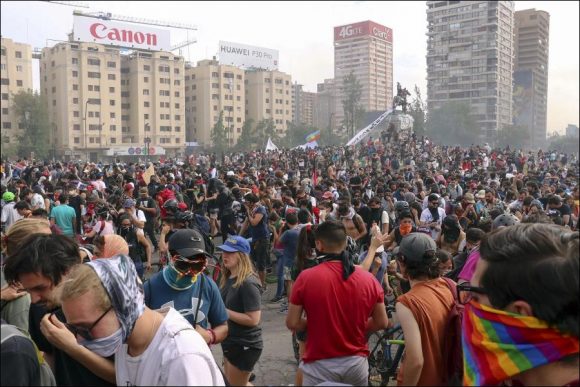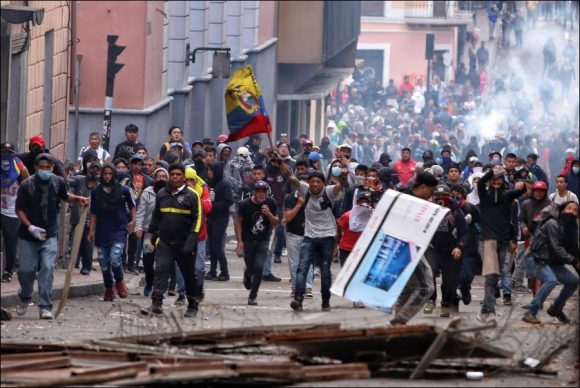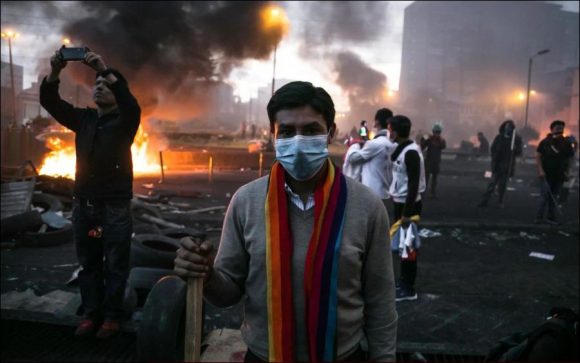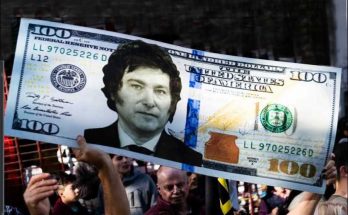Mass street protests continue in Ecuador, Haiti, Chile, Bolivia and Honduras. 73 people were killed, 3.322 people were injured and 4.599 people were detained during protests.
Reasons such as injustice in income distribution, hikes, economic decisions without public support, collapse in public services, corruption and allegations of cheating in elections raised the fire in Ecuador, Haiti, Chile, Bolivia and Honduras.
State of emergency in Ecuador
According to the Associated Press, protests that cost the lives of 6 people in Ecuador began on 3 October in response to President Lenin Moreno’s economic package, including the abolition of fuel subsidies. The declaration of state of emergency, the relocation of the government headquarters from the capital, the curfew, the harsh intervention of the security forces, or the weak support rallies of the supporters of the government were not enough to stop the protests that soon became a local rebellion.
Moreno returned to the capital on October 13th and sat at the dialogue table with the protesters after the persistent protests of tens of thousands of indigenous people who reached the capital Quito from all over the country and supported by the inhabitants. The demonstrations that led to the burning of very important public institutions and the plundering in many cities, especially in Quito, ended when President Moreno agreed to withdraw the economic package by negotiating with local leaders on air. 1.942 people were injured in the protests. 1.330 people were detained.
The number of deads increases in Haiti
Protests in Haiti, the poorest country in the continent, killed at least 48 people, making it impossible to supply fuel, drinking water and food, the lack of credit for small businesses as a result of the economic contraction, and corruption claims made by President Jovenel Moise’s Petro Caribe project for $ 4 billion. The name is based on such reasons.
The first wave of protests began in the first week of February, according to data shared by the Inter-American Human Rights Commission (IACHR), 26 people were killed and 80 injured. The second wave of events began on July 9, two people were killed. The last wave of the 7th week of the protests in the capital Port-au-Prince, where the poor especially participated, started on September 16, and so far one journalist has left at least 20 dead and close to 200 injured. At least 77 people have been detained in recent protests in Haiti.
Metro price hike protests in Chile
19 people were killed and 92 injured in the protests around the country on October 18th, which started with the increase in subway fares in Santiago, Chile’s capital. 3,192 people were detained. President Sebastian Pinera demanded the resignation of the cabinet on October 25th, when nearly 1 million 200,000 people filled the square in Italy and its surroundings. The protests in which all sections of the public participate from the retired students continue in the second week.
Election fraud protests in Bolivia
In Bolivia, 8 people were injured in the protests and violence that started with allegations of cheating in the general elections which resulted in the victory of President Evo Morales on 20 October and turned into looting in some regions. Despite Morales’s acceptance of an international investigation against the allegations and the recounting of votes, the opponents who insistently want the second round are protesting, especially in cities like Santa Cruz and Potosi.
Election corruption in Honduras
In Honduras, President Juan Orlando Hernandez’s brother was convicted of drug trafficking last week in the United States and allegedly receiving money from Mexican drug baron Joaquin Guzman, nicknamed El Chapo for Hernandez’s election campaign, triggered anti-government protests.
Visits: 86





